|
|
|
|
Introduction
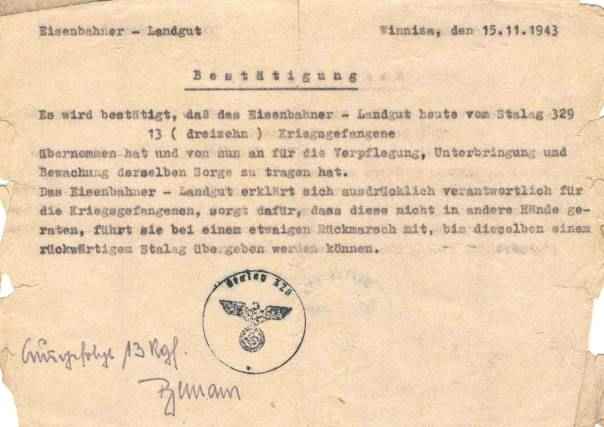
Receipt for handing-over 13 Sovjet POWs, 1943
Regimentation und need – harm and death – lies and propaganda
– these are
the main slogans by which the material of this CD-ROM can be described. Not
only soldiers, but more and more civilians are afflicted by need, harm and
death in a modern war. During World War I, 15 % of the people killed were
civilians, in Word War II about 65 % (in today’s wars
about 90 %). During World War II, in the occupied countries, especially in
Eastern Europe, the Germans raged with terror and mass-murder. For the people
in Germany, the war with death and devastation came with the allied bomber
groups and then with the expulsion from the East. The regimentation of more and
more aspects of life became more and more strict and the slogans to hold out
increased.
Death, need, attempts to rule the
shortages, regimentations caused by these attempts, engagement for the war and
moral armament by propaganda have produced a great number of written and
printed ephemeria and of documents of all kinds. They
were not made for posterity but for the contemporaries; for direct use, for
information and propaganda. Exactly that makes this material interesting for us
today as the past is speaking to us directly and truly and enables us a to
catch a real glimpse of life in those days.
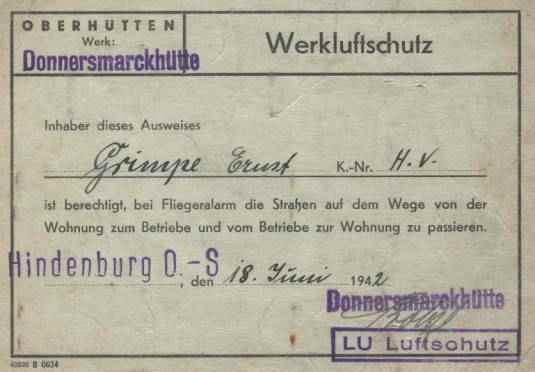
Identity
card for the air defence of Donnersmarckhütte,
Hindenburg (Upper Silesia), 1942
There we can find: Certificates;
identification cards; a service record book; pay slips; documents of discharge;
licences to use the railway; delousing certifications; obituaries in the
newspapers; letters of condolence; death cards; military souvenir magazines;
picture postcards for soldiers; aphorisms on field-post letters; allied
propaganda leaflets; air-raid warnings in Berlin and Stuttgart; small
advertisements; ration cards; campaign “Coal swiper”;
frontier-crossing documents; advertisements; postage stamps; books and
brochures; articles from newspapers and much more.
The material of this CD came from
different private properties in Germany and Austria. With no more immediate
interest or use for it’s
owner, it has survived for decades as a commemoration piece or was totally
forgotten in the loft. After a death, a move, a renovation of the house and so
on, they were rediscovered and sold at the flea-market or at an internet
auction.
The greatest part of the objects
presented here by the editor and acquired for his archive came from these two
sources during the past few years. The great stamp-collection was a heritage
from his grandfather. Only a few objects for the CD were made available by
other owners. I want to express my thanks here.
Also in war-time, “paper warfare“ formed an important part of military life. In the field as
well as the communications zone, lots of documents and certificates were
produced. Compared to documents from civil life in Germany, less will have survived.
In your apartment, you likely will put such a thing into a tray or a folder,
where it can survive for a longer time. The soldier in the field only has his
backpack. For him, to keep a paper which has fulfilled it’s practical purpose and is no longer needed, will
be a much more conscious act. He must always carry it with him and must find a
place to put it, where it cannot become wet and crumpled. When he takes
something out of his backpack, it will again and again fall into his hands and
be in his way. That means the soldier will throw it away more quickly.
For this reason, more documents of
civil life in Germany can be found on this CD. From “Home”, from the families
of the soldiers comes the great number of documents related to the deaths of
the soldiers, including the unit’s letters of condolence, newspaper obituaries
and death cards. More aspects of the bureaucratic regimentation of every day life in war-time Germany can be found in the
Table of Contents.
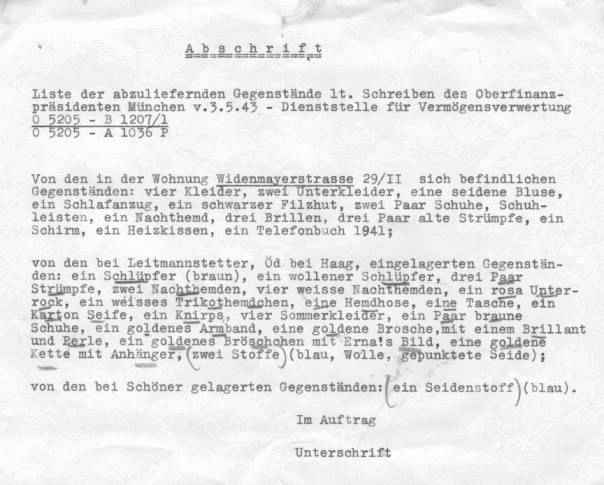
List of
objects which had to be handed over from the property of a Jewish lady deported
to
Theresienstadt, 1943
There are only a few documents
related to concentration camps and the persecution of the Jews. A person who
was driven out of his house, deported to the East and killed there, could not
keep any documents, had no loft where these documents still wait for being
discovered and had no heirs who later could have found them. Children at once
came into the gas chamber.
An interesting lot of documents has
survived in a lawyer’s folder (also these things then later came to the
flea-market) who was a friend of the afflicted family. The lady was 73 years
old when nearly a year after the death of her “Aryan” husband, she was deported
to Theresienstadt (the oldest fellow-sufferer in her
transport was 89 years old). There she died in 1945.
The selected publications – extracts
of brochures, books, magazines and caricatures – are proofs of a public and
published opinion brought into line. They have nothing to do with reality. They
are proofs of a centrally guided propaganda which meant to influence the people
in the sense of the government and it’s ideas, aims
and actual needs. Here are some quotations from the diaries of Joseph Goebbels,
minister of propaganda:
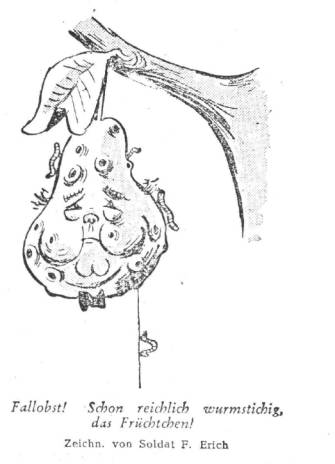
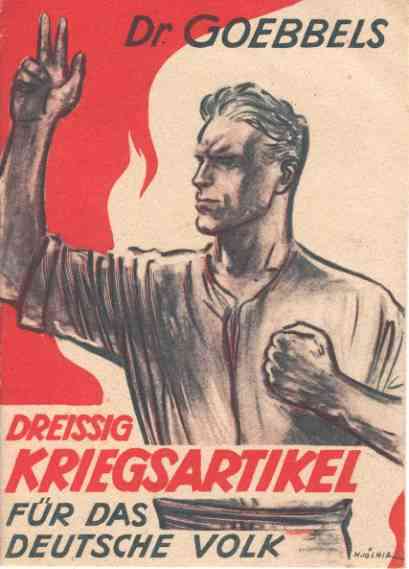
German caricature on Winston
Churchill, 1940
1941, July 9: „The tasks of
propaganda are evident. It must be our aim to discredit bolshevism during the
campaign in the East. In the moment when our military force will be directed
against England, propaganda will principally again have to argue against the
English plutocracy.“
1941, July
10: „Our revealing of the bolshevist cruelties in continuing. Anyway, the
disadvantage is that little by little increasing parts of the German population
are troubled by supposing that the German prisoners of war are mistreated by
the bolshevists. Therefore we must somewhat dose this sort of propaganda.”
1941, July
12: „How good is it that the German people do not come to know everything!
They get their opinion served completely done. In wartime this is the only form
of policy of information and propaganda which can lead to success.”
And here
the instruction of the ministry of propaganda for the press from September 1,
1939, the day the war broke out:
„No
headlines containing the word ‘war’! According to the speech of the Führer ‘we
only strike back’. The DNB (German Bureau of Information) gives a compilation
of material which shows that yesterday Poland was determined not to fulfil the
known claims of Germany. Serious polemics and comments are urgently required.
Comment to the Führer’s speech: the Führer has spoken from the depths of the
people’s heart. State that the German people are determined to beat back the
threat in a body, wherever it might come from.”
Such
instructions were given daily, even concerning subjects which would seem to be
of only little importance. Radio, film, the production of books and art were
guided equally strict. So we must see the printed matters shown here as what
they really were: as propaganda.
|
|
|
|